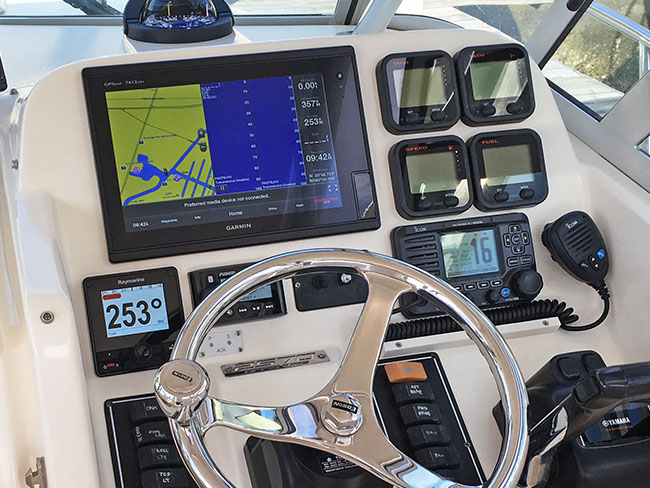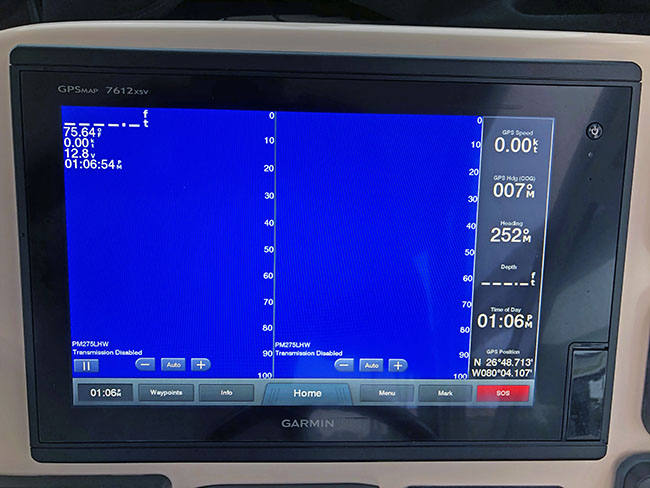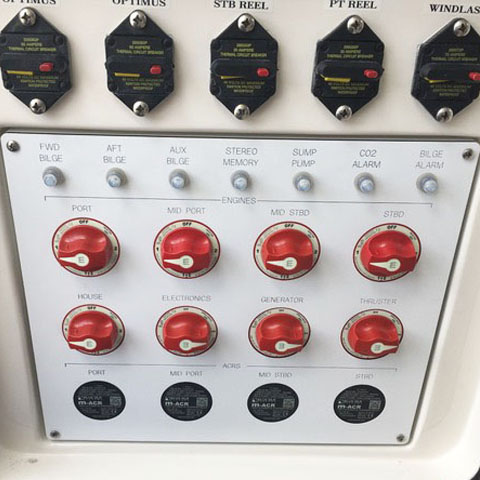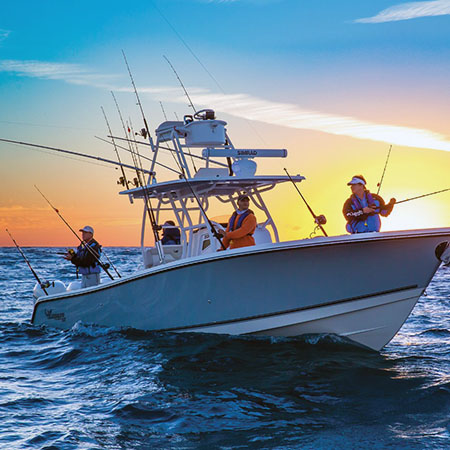 CHIRP technology, CHIRP being an an acronym for Compressed High Intensity Radiated Pulse, has been around since the 1950’s. It is only recently that it has been readily available to the civilian public and taken advantage of in regards to it’s vastly superior performance compared to traditional 50/200 khz or other fixed frequency predecessors.
CHIRP technology, CHIRP being an an acronym for Compressed High Intensity Radiated Pulse, has been around since the 1950’s. It is only recently that it has been readily available to the civilian public and taken advantage of in regards to it’s vastly superior performance compared to traditional 50/200 khz or other fixed frequency predecessors.
In a nutshell, it has the ability to put more energy into the water across a range of frequencies in a given time period vs. the traditional systems which were at a fixed frequency (50,200, or other single digit frequency) for a comparatively vastly shorter duration. The result is “The equivalent sound energy transmitted into the water is 10-1000 times greater than a conventional marine fish finder. Resulting in more energy on target.” credit, airmar.com
If you have had the ability to experience a properly installed and tuned CHIRP transducer’s performance, then you understand immediately the difference. It is truly amazing and a night and day difference from the old technology.
A few years back, when speaking to an Airmar engineer about a unrelated issue, I discovered something about this new to us technology that I haven’t seen mentioned anywhere else. I see it as a potential disaster for someone that owns this technology and is unaware, as I was before this conversation, of what could happen.
With the prior technology, the amount of energy being transmitted in a time frame was vastly less than with CHIRP. The new energy levels, as is not hard to imagine, generate more heat. How much more heat? According to the engineer I spoke with, he had a 1kw traditional transducer on his bench, transmitting every day (for testing purposes) with no heat issues. He stated that with a CHIRP transducer, depending on settings and ambient conditions, left dry (not in contact with water, or in the case of an in hull mount, surrounded by a glycol (coolant) solution), it could potentially reach damaging internal temperatures in as little as 30 minutes! While that may be a worst case scenario, there is still cause for concern.
What occurred to me immediately was the need to thoroughly educate my clients. Not just upon installation, but taking great care during my installation of this device, and also during hauling and launching of any boat with this technology. Finally in regards to my own boat, Dvocean, every time operating the lift or using the trailer.
As someone that is passionate about my industry, and truly enjoys the experience of installing and bringing online new equipment, time can go by rather quickly on initial power up. There are networks to verify operation of, software versions to check, initial screen setups, individual network component tests, and naming devices on networks to name just a few things that can happen on that first power up. Time can fly by rather quickly in the flurry of button presses, testing and configuring. If the boat is anywhere other than floating in the water, that potentially brand new transducer could be overheated on it’s first power up with our South Florida weather patterns.
Another potential for trouble is the boat that lives in the water until an annual or otherwise haul for bottom paint or other work. Leaving this on without realization could easily end up in a CHIRP transducer dry transmitting for the remainder of the day or longer without anyone realizing what was happening. In one recent improper install, I discovered that the way the equipment was installed, whenever the battery switch was on (the owner left it on at all times), the sonar module was powered up and the CHIRP transducer was pulsing. The boat had been hauled for weeks previously, as well as the wear on the transducer of having transmitted constantly for over a year.
Usually smaller boats that are lift kept could understandably easily fall into a scenario of dry CHRIP transmitting. Care needs to be taken here to avoid this.
 How do you protect your CHIRP transducer from overheating or just overuse/unnecessary wear? On every install a provision for this should be considered, and options weighed based on customer preferences, with a custom solution provided as necessary. In the case of Dvocean, the Skyler Marine test vessel, it is part of my lift routine to utilize on my Garmin plotter a feature that allows disabling or enabling the transmit portion of the built in sonar as I am raising or lowering the boat. On other boats it may be easier or more reasonable to turn off a dedicated sounder breaker. I shy away from the scorched earth, no electronics on if the boat isn’t wet approach as I see that as unreasonable and easily forgotten or unknown by someone unfamiliar with the boat. I advise after every install for the owner or captain to go to the boat and experiment with their electronics with a cup of coffee and no pressure to use the boat. It is always a great idea to do this from time to time anyway to re-familiarize and discover new features that may have come available during the last software update. It’s amazing how quickly time can pass when exploring these wonderful products, and care should be methodically taken to protect this component in any and every event.
How do you protect your CHIRP transducer from overheating or just overuse/unnecessary wear? On every install a provision for this should be considered, and options weighed based on customer preferences, with a custom solution provided as necessary. In the case of Dvocean, the Skyler Marine test vessel, it is part of my lift routine to utilize on my Garmin plotter a feature that allows disabling or enabling the transmit portion of the built in sonar as I am raising or lowering the boat. On other boats it may be easier or more reasonable to turn off a dedicated sounder breaker. I shy away from the scorched earth, no electronics on if the boat isn’t wet approach as I see that as unreasonable and easily forgotten or unknown by someone unfamiliar with the boat. I advise after every install for the owner or captain to go to the boat and experiment with their electronics with a cup of coffee and no pressure to use the boat. It is always a great idea to do this from time to time anyway to re-familiarize and discover new features that may have come available during the last software update. It’s amazing how quickly time can pass when exploring these wonderful products, and care should be methodically taken to protect this component in any and every event.







